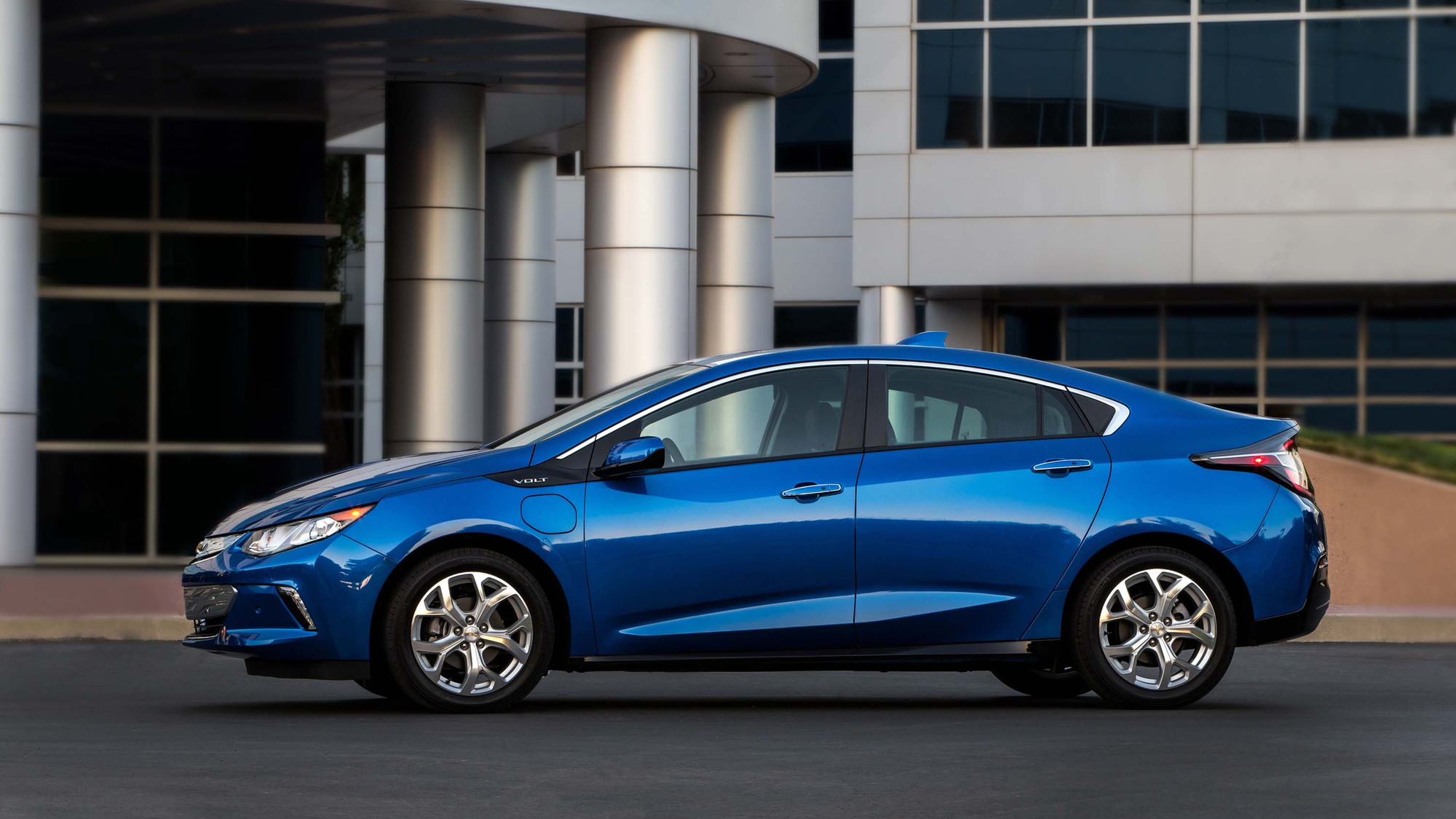
Unlike in the Bolt, the regen drops off at the last couple of mph, requiring a touch to the brake pedal. This enables one-pedal driving, where pressing on the accelerator moves you forward and lifting your foot slows you down. You can also increase the car’s electric regeneration by setting the transmission in “L,” as in the Bolt EV. I used Max because it was cool during my test week. You can extend your range by selecting Eco for the climate system instead of Max. If you don’t use the gas engine much, you’ll likely do better. EPA Green scores are a perfect 10 for Greenhouse Gas but a 5 for Smog. Fuel economy stats are 106 MPGe for electric only and 42 mpg for gasoline only (combined city and highway).
#2019 CHEVROLET VOLT 3 HONKS FULL#
The most all-electric range of any PHEVĮPA range numbers are 53 miles for electric only and 420 miles total with a full battery and gas tank. The only sound is a high-tech whine programmed in to project at low speeds to warn oblivious pedestrians. The Volt’s motor provides 149 horsepower versus the Bolt EV’s 200, but 294 pounds-feet of torque enables exuberant driving without undue drama in the 3,549-pound car. Smooth Electric Drivingĭriving electric is a joy-it’s smooth and quiet. The Volt is lower and smaller inside than its all-electric Bolt EV sibling, even though it is stretches longer nose to tail. Rear seat accommodations are not overly generous, however, and a center console limits the middle position to a car seat (a belt is provided).

You can fit plenty in the rear, for that reason. The 2019 Chevrolet Volt is a hatchback that looks like a sedan. You get current and cumulative range projections and can monitor how much you have in both your battery and fuel tank. Much of driving an EV efficiently is managing your acceleration and braking, and a floating ball display lets you see at a glance whether you’re charging or discharging the battery. Charging at home on 120-volt current, using the supplied cord, takes around 13 hours-approximately overnight-depending on ambient temperature. A Better Chargeįirst-gen Volts charged on Level 2 at 3.6 kilowatts (kW) per hour, but for 2019, only the LT soldiers on with that, while the Premier gets a 7.2-kW system that cuts charging a drained battery from 4.5 to 2.25 hours. The swirls of matte-finish plastic and tasteful chrome accents convey motion and excitement, while the colorful dash panels provide all the information you need to monitor your driving. My Premier tester had the upgraded features you’d expect and felt much plusher than the first-generation car. The Volt comes in two levels-LT and Premier.

Chevrolet claims that “on average, new owners of the Volt travel 1,100 miles between fill-ups with regular charging (based on 2016-2018 model-year owners.)” I didn’t take any long weekend trips, so during my week-long test I used exactly zero gasoline.

My 18-mile-each-way commute was easily handled, using the ChargePoint Level 2 (240-volt) chargers at work and household current at home overnight. My test Pacific Blue Metallic 2019 Chevrolet Volt proved the point. An All-Electric Commute The interior is upscale and filled with tech You could use this arrangement to go hundreds of miles, so the range anxiety of the Leaf’s 73-mile range was not a factor. Unlike a traditional hybrid, the car was essentially an all-electric powered car, but when it ran out of juice, the small engine kicked in to charge the battery, not to drive the wheels. Based on research that said that most car owners don’t drive more than about 40 miles a day, GM provided the Volt with a compact battery pack and included a small gasoline engine as a range extender. While the Leaf jumped into the EV market with both feet, the Volt was a calculated compromise. A hatchback masquerading as a sedanĮlectric vehicles entered the automotive marketplace at the beginning of this decade, when Nissan’s all-electric Leaf and GM’s first-generation Volt arrived with big fanfare. Now in the fourth year of its redesigned and improved second generation, the Volt, despite its high-tech powertrain, is the latest in GM’s long history of compacts, from the Corvair to the Chevy II, Nova, Cavalier and Cobalt. The Volt is a hatchback that looks like a sedan, which puts it at a disadvantage in the American car market, where crossovers are becoming king. It may be good news, though, if GM does what it promises and doubles its investment in the all-electric vehicles it will introduce in the next decade. That’s unwelcome holiday news for the plant workers, but reflects business reality-the Volt has never been a big seller.

During the very week I was testing the 2019 Chevrolet Volt plug-in hybrid, GM announced that it was closing the Detroit-Hamtramck plant where it’s built, in March, 2019.


 0 kommentar(er)
0 kommentar(er)
